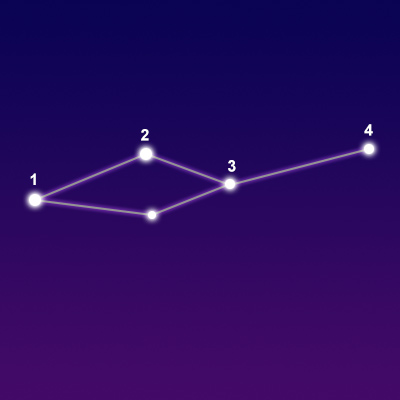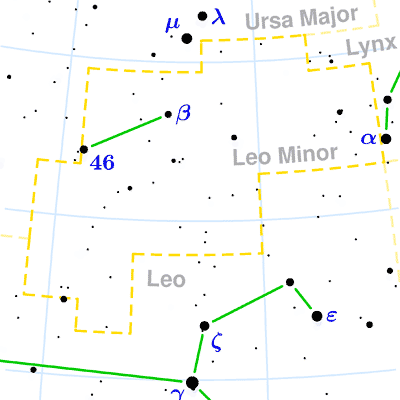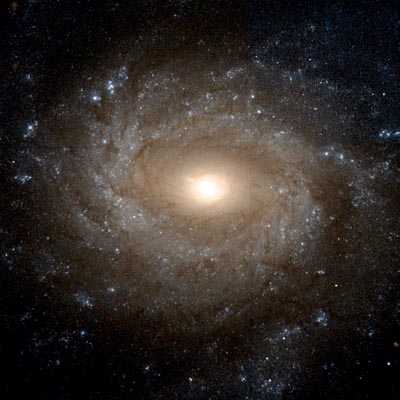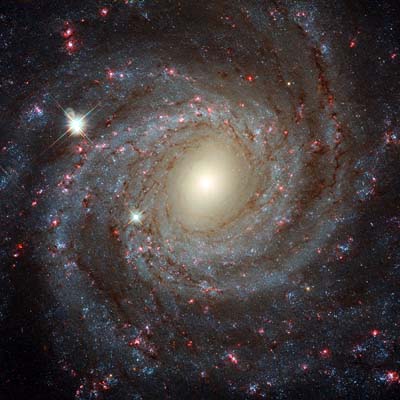Pronunciation:
(LEE-oh MY-ner)Abbreviation:
LMiGenitive:
Leonis MinorisRight Ascension:
10 hoursDeclination:
35 degreesArea in Square Degrees:
232Crosses Meridian:
9 PM, April 10Visible Between Latitudes:
90 and -45 degreesThe constellation Leo Minor, the lion cub, is completely visible at latitudes north of -48 degrees from January through March. It is a small constellation occupying only 232 square degrees of the sky. It ranks 64th in size among the 88 constellations in the night sky. It lies between the larger and more recognizable Ursa Major to the north and Leo to the south.
There are no myths associated with Leo Minor. It is a relatively new constellation created from a dark region of the sky. Ancient astronomers considered the region to be undefined with no distinct patterns. The stars in this area were originally considered to be part of the constellation Leo. It was the Polish astronomer Johannes Hevelius who first depicted Leo Minor as a separate constellation in his star atlas in 1687. It was one of ten new constellations in his new star atlas, Firmamentum Sobiescianum. In 1870, the English astronomer Richard Proctor attempted to rename the constellation to Leaena, the Lioness, in an attempt to shorten the name. But the new name was not widely accepted and the name Leo Minor exists to this day. It is the only constellation with no alpha star designation. This is due to an error when the constellation was cataloged.

points of interest below © Sea and Sky

© Torsten Bronger CC BY-SA 3.0
Beta Leonis Minoris
21 Leonis Minoris
10 Leonis Minoris
N/A
N/A
N/A
Binary Star System
White Dwarf Star
Yellow Giant Star
4.22
4.49
4.60
Leo Minor is a dim constellation with only one star brighter than magnitude 4. The brightest star is 46 Leonis Minoris with a visual magnitude of 3.8. It is also known by the name Praecipua, which means "principal star". It is an orange giant star located about 95 light years from Earth. The second brightest star is Beta Leonis Minoris with a magnitude of only 4.22. It is a binary star system that lies 146 light years from our solar system. The third brightest star is 21 Leonis Minoris with a magnitude of 4.49. It is a white dwarf star 92 light years distant from the Sun.
Leo Minor contains no Messier objects, but there are a few interesting deep-sky objects to be found here. These include a quasar known as Hanny’s Voorwerp, a pair of interacting galaxies known as Arp 107, an edge-on spiral galaxy called NGC 3432, a face-on spiral galaxy known as NGC 3486, and a barred spiral galaxy called NGC 3344. These objects are extremely faint and can only be seen in very large telescopes.

© Fabian RRRR / CC BY 3.0

© ESA/Hubble / CC BY 4.0



